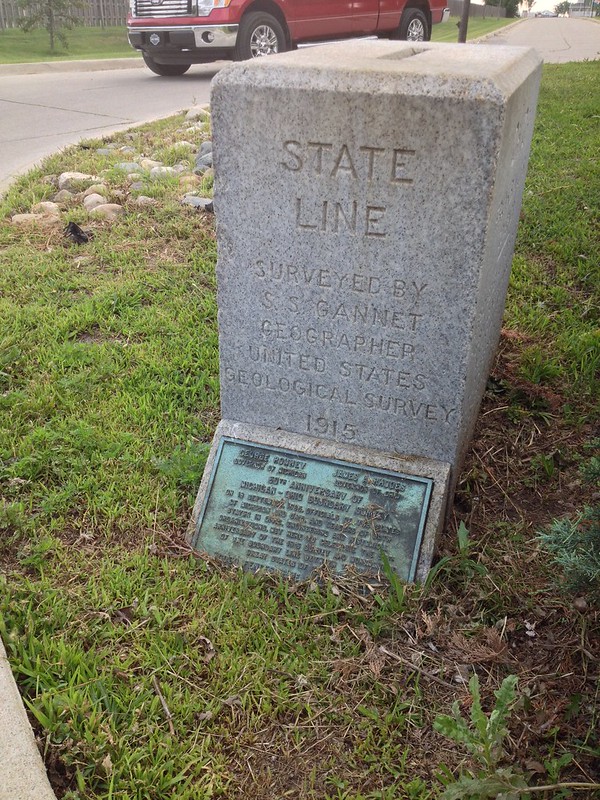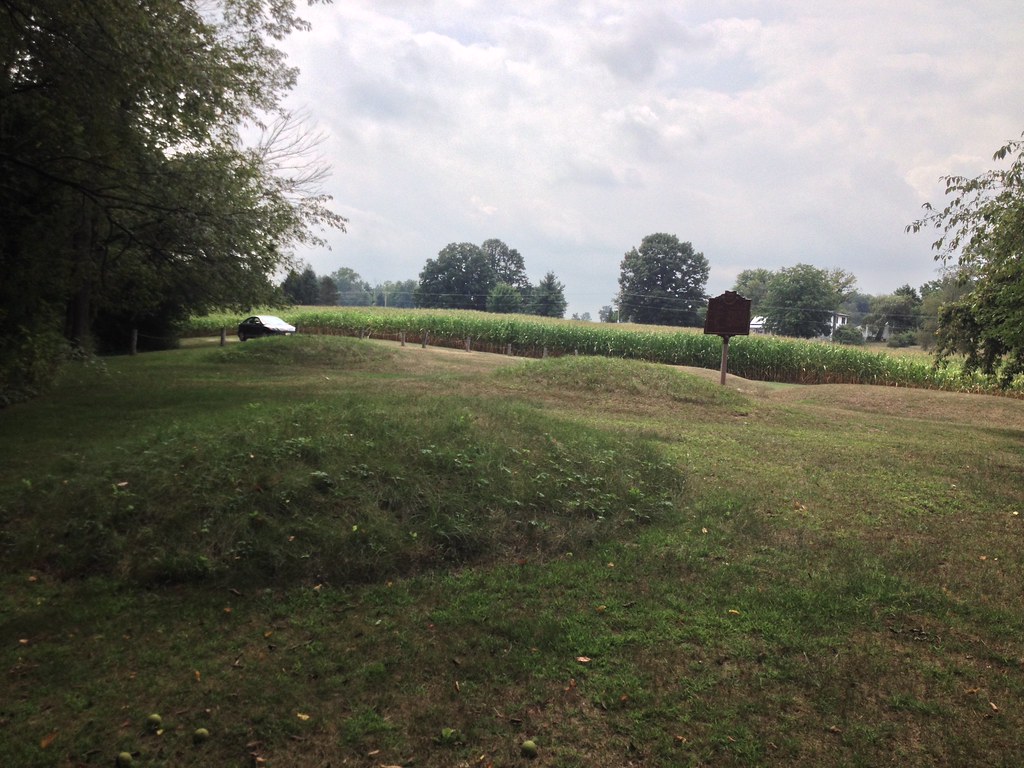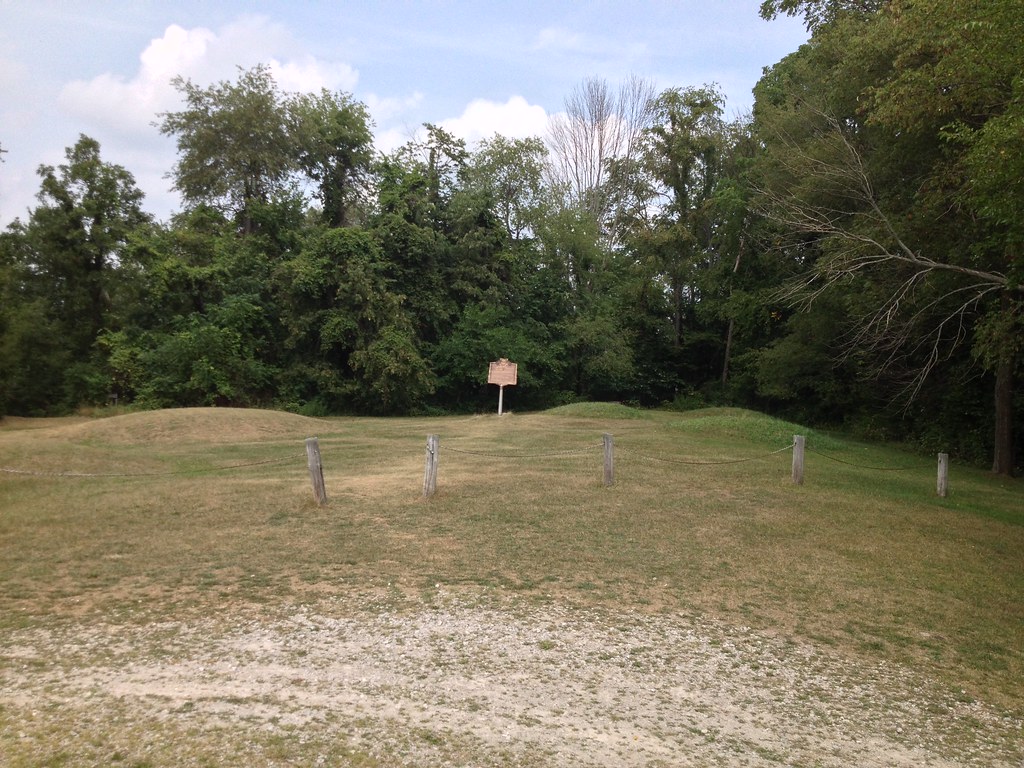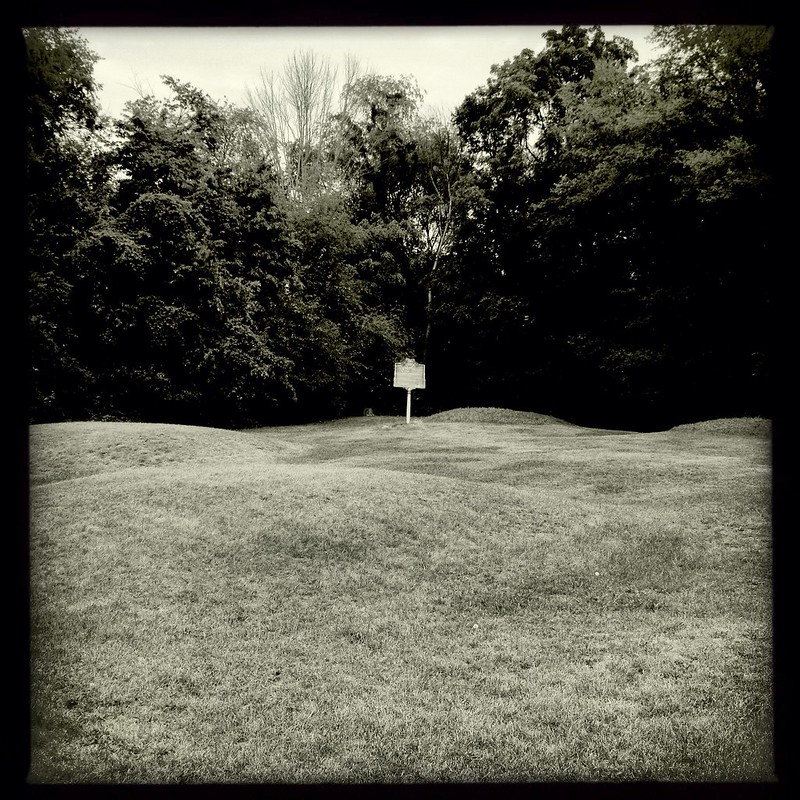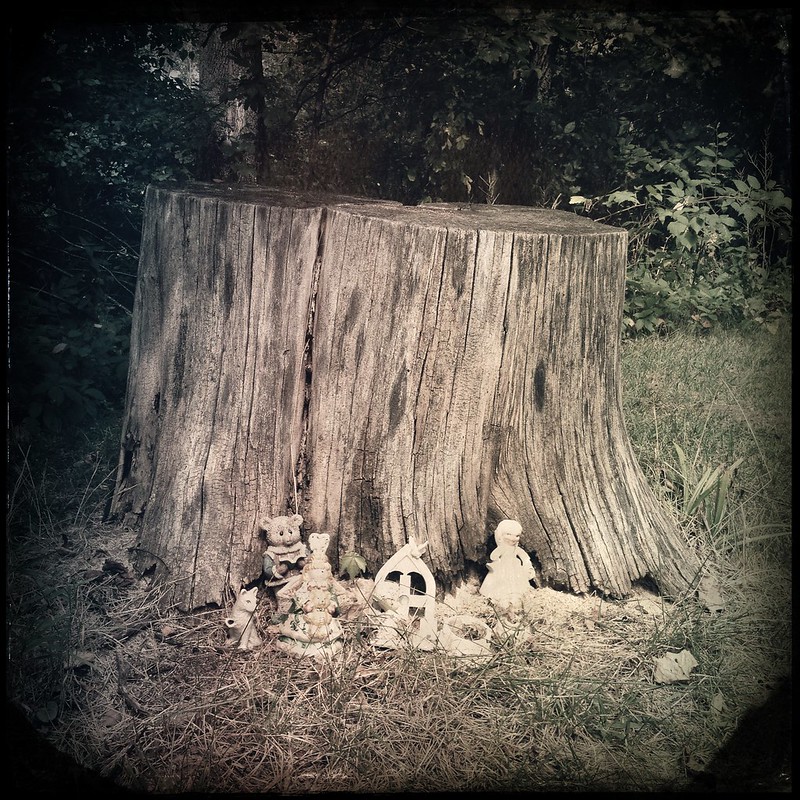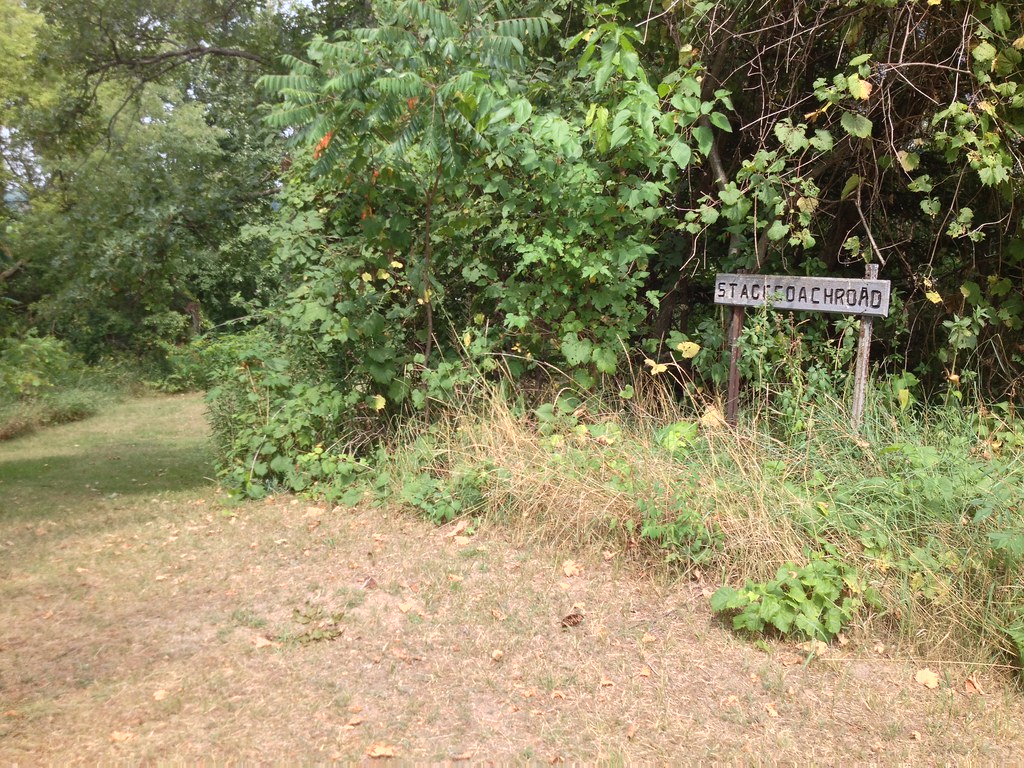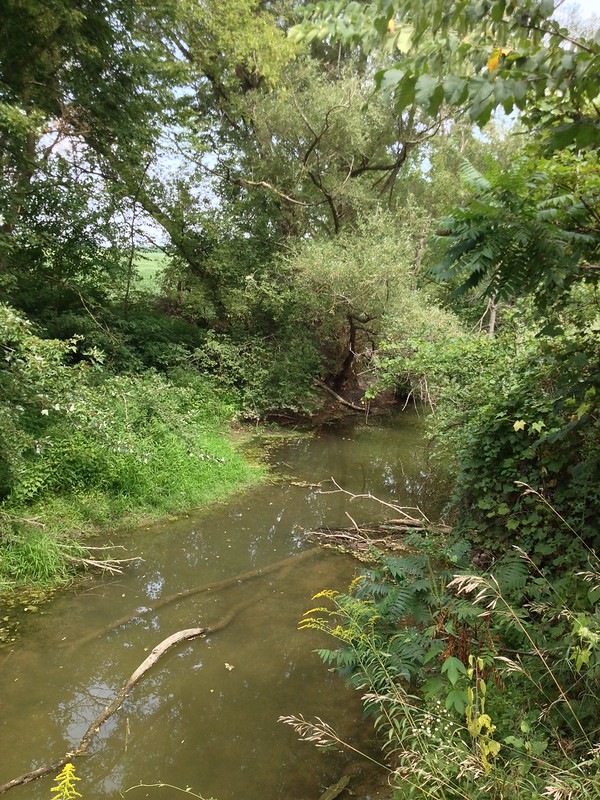An interview with Rob Krain, Executive Director of Black Swamp Conservancy. Forrest Woods Nature Preserve, outside Cecil, Ohio, 29 April, 2017.
Transcribed by Sam Love, 29 June, 2017
I spotted Rob Krain walking up the road leading to Forrest Woods Nature Preserve. To our west a field of recently planted trees, their immature trunks shielded by protectors and almost resembling a military graveyard, reaching the existing treeline on the horizon. One day this will all look very different. The woods will be closer.
Rob is holding a color-coded map of the preserve and pointing to different sections. “This is that restoration field to our west. We’ve got another similar kind on the bottomland here and then next week we’ll be putting more trees on both of these sites and reforesting both properties. This field we’re buying, that one we’re buying next year, so there’s a lot going on and more coming down the line.”
It began to rain and we got in the car.
My name is Rob Krain, I’m the Executive Director of Black Swamp Conservancy. I studied Environmental Policy and Analysis at Bowling Green and really at the tail end of that, towards the time I was getting ready to graduate, I took on a contract position to manage our farmland management program that year. I was pointed there by one of my professors. At the time I didn’t know what a land trust was. I thought I was going to go do policy work. Thank God that didn’t happen because I’ve been having fun ever since!
Do you recall your first impression of Forrest Woods Preserve? And how does your history and its history dovetail?
Yes, I do. This was the first piece of land I had the opportunity to manage, so it has a very special place in my heart. The first time I came out here it was winter, towards the tail end. I remember going into the woods and just being amazed by the resources that are there and then walking these fields. At the time we were renting these fields out for corn and soybean production. I have pictures that I can share with you that I took that day of just terrible erosion coming off the fields. You could see it. We’ve got this really precious resource in the middle and we’re supposed to be a conservation organization and we were just allowing soils and pesticides and everything else to dump right into it. So I kind of saw two angles: amazed at what we had and really concerned about how we were managing it. That would have been ten years ago. Ten years later you see what we’re finally accomplishing.
How would you describe the preserve and its significance?
Simply the fact that it’s a remnant of our natural history in the Great Black Swamp, but even beyond that this is one of the largest tracts of woods left in Northwest Ohio and we’re now working to expand it and build a larger tract of woods. It’s also home to thirty rare, threatened, and endangered species. The list is on our website.
Northwest Ohio used to be the historic Great Black Swamp. That was a one hundred square mile swamp that stretched all the way from Lake Erie to Fort Wayne, Indiana. It’s all been destroyed and converted into cropland. All of our farm fields are tiled here, so water runs off subsurface. If that drainage was not installed the land would revert to swamp very quickly. Forrest Woods is one of the very few true remnants of the Great Black Swamp. I always say that in my opinion there are three true remnants left. This is one of them. The second is a place called Goll Woods, it’s owned by the state. The third is the woods behind our office, which is also protected by our organization.
Just to experience that bottomland swamp forest that used to characterize this entire region really is something special. This time of year this is one of the best properties I know of for wildflower blooms. You can really see the wide diversity of wildflowers, and that’s what we’re gonna get wet doing today. And there’s also some massive, massive trees on this property. This site was never fully cut over so there are original, 300+ year old oak trees in there.
I’ve just recently learned about the tiles.
They’re still installing tiles. If it weren’t for them, the entire area would be a swamp. As you drive down the road you can see the outlets, look along the ditches and you’ll see the pipes coming out. Those are the tiles. That’s really why we have the water quality issues that we have. We’re moving the water from the land to the lake so quickly that we get that flash periods were there’s rapid delivery of phosphorous to our waterways.
How did Forrest Woods Nature Preserve come to be?
This was an unknown spot up until about the 1970s, just a private family property. In the 1970s the Ohio DNR was doing surveys of great blue heron rookeries and that lead them to this woods, which has always hosted rookeries. When they got in there they started to see a wide variety of rare plants and animals. Four toed salamanders, and even a couple of species of plants that had been thought to have been extirpated from the state of Ohio. Very quickly the DNR elevated this property to the top of their priority list. Then they spent twenty years or so unable to shake out the funding. They had a deal with the landowner, but every time they thought they had the funding to purchase it, one of their other priority parcels would come available at a critical time. They’d move to that one and it just never happened.
In 2002 the state of Ohio created the Clean Ohio Fund, which I think at the time was a 300 million dollar pot of money to do recreational trails, farmland preservation, greenspace and brownspace revitalization. The state cannot use that money for its own acquisitions, it is for non-profits and local governments. So at that point Black Swamp Conservancy just getting on its feet. DNR called us in and we, thank goodness, bought that first 80 acres.
Paulding County has had a park district on paper since I think the 1930s and the original plan was to help them get on their feet and transfer it to them. They are still working on getting on their feet and even when they do I’m pretty sure we’re going to keep this place because it’s so special.
What is your relationship with people around here? Do the locals appreciate it?
There are some very diehard people. We have one lady who comes out weekly, she’s doing a ten year survey of the wildlife she sees. The neighbors love this place. We allow them to hunt on the property and in turn. They watch over it for us and call if there’s any problems. Our office is about an hour from here, so maintaining those local relationships is really important. All in all we have not really engaged the broader community here, but are starting to invest more time and resources for public benefit. This parking lot was installed last year. You passed another one coming in on the other side of the river, that was installed last year. We’ve always taken the attitude that the deep swamp is too sensitive to allow unfettered public access, but these restoration areas allow more opportunities for public use.
We bought the property across the river just last year to open it up for public fishing and boating. We’re gonna put a boat ramp in. Putting a trail in was part of the restoration we did on this parcel, so we’re hoping to make it more a community resource but we’re just on the cusp of it now. Other properties where we’ve had the visitor amenities for some time have become very beloved. We have coastal properties on Lake Erie and on the islands that have had public access for years. We’ve got property in the Oak Openings region and we now have this site. It’s a lot of geography to cover, but it’s a lot to play in too.
My ancestors lived about a mile and a half up the road, in between Mark and Hicksville, and they were among the first settlers out here. I’m curious, what did this area look like then?
[Pointing on the map] This is Marie DeLarme creek, I don’t speak French so I can’t eloquently give you the full story but essentially however you would say “Ash-Elm Swamp” in French, Marie DeLarme is kind of a bastardization of that. This whole area was an Ash-Elm swamp. This time of year you would be up to your waist in water and mud, and it never really totally dried out. It was called the Great Black Swamp because the forest canopy was so thick that it was just dark inside the woods. Full of wildlife, a lot that’s not here anymore.
It sounded like a difficult place to live. They didn’t stay long.
The people that settled this area… I tell ya, I would have kept going into Indiana. They were a hardy lot.
Some of these higher areas over the river may have been dry, and maybe even this field here because it does dip down a lot when you get on the other side that ridge, but mostly this was just a continuous swamp.
I know the high areas were populated by the Natives because every time we do an archaeology study we find something. On any high ground. Mostly just pieces of arrowhead, and I also have a grinder stone we found. There’s a big pit down on the bottomland field that we’re about to buy. It has a just of ton of mussel shells. So we think they were using that area as a depository.
What are your future restoration plans?
The biggest thing is that we’re expanding wildlife habitat in one of the really critical natural areas that’s left in our region. But we’re also doing this for water quality benefits, and a lot of the funding is driven by that.
Could you one day connect remnants and fragments through greenbelts? Say, to Goll Woods?
Goll is probably a stretch. What my conservation manager and I are talking about is trying to build Forrest Woods into a thousand-acre property. We have been working with a group that’s establishing the Maumee River as a river trail and buying sites along the river. That’s one of the reasons we bought the riverfront property here. So from that sense; mobility, allowing people places to do multi-day excursions or where they can paddle the whole river and camp along the way. That’s the sort of thing we’re looking to support with this project.
What’s interesting about this preserve is it’s located at the confluence of Marie DeLarme Creek and the Maumee River. I look at that as “end of pipe”. So you’ve got a 1500 acre drainage area of farm fields that needs to pass through this property before it gets to the Maumee River. And this is our opportunity to slow that that water down, capture it in some of these pools we’ve created, and allow the vegetation to uptake nutrients before they reach the river and get in the lake and feed harmful algae blooms that have the potential to shut down our drinking water supply.
Did the algae blooms bring more awareness to the value of places like Forrest Woods?
I think so. I think it’s driving more public awareness and more funding. It’s allowed our organization a platform to communicate why wetlands are important. We need more balance. We’re out of equilibrium. But, we aren’t going after farmers. Our organization works to buy the appropriate land and restore ecosystem service that’s an opportunity for the conservation community and the agricultural community to work together. The interesting thing though is that I think people have short memories so while there is a lot more attention and a lot more focus we almost need another water crisis. The Cuyahoga River caught fire seventeen times. We always hear of it catching fire but it caught fire seventeen times before resulting in the Clean Water Act.



